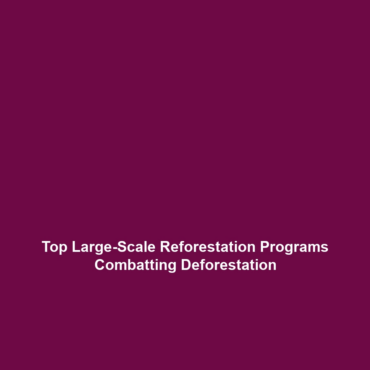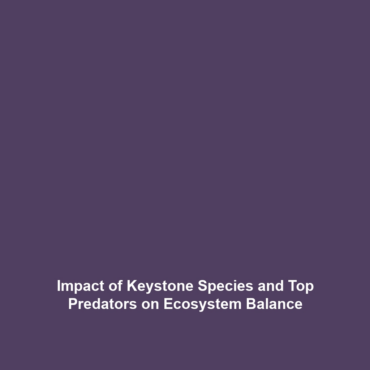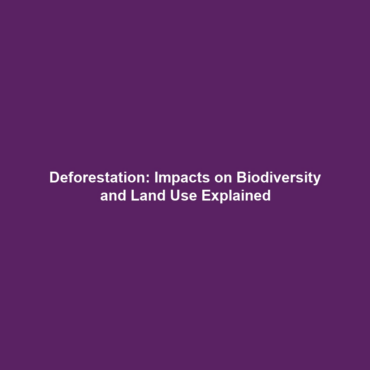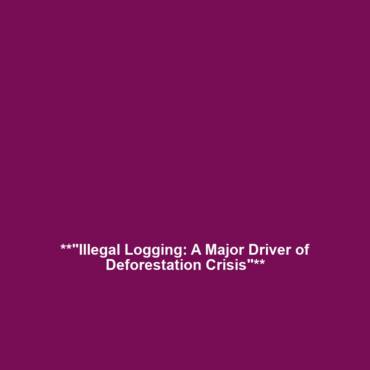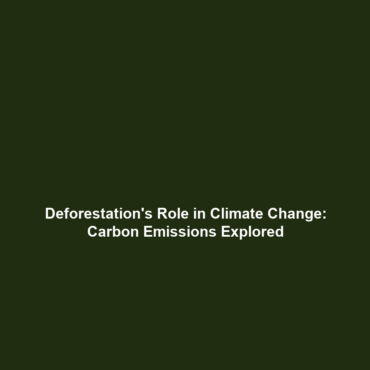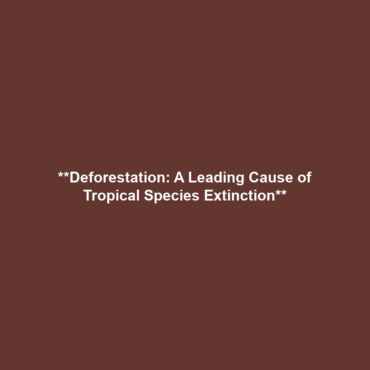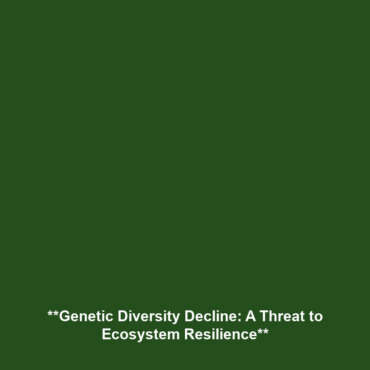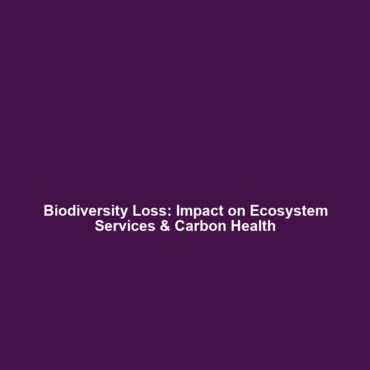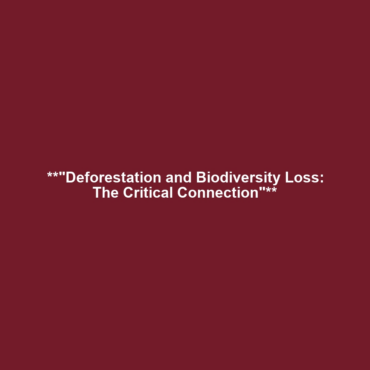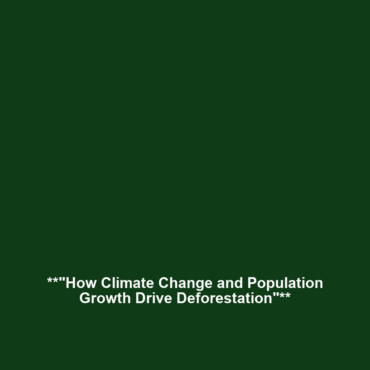Large-Scale Reforestation Programs: Combating Deforestation and Biodiversity Loss
Large-scale reforestation programs have emerged as critical solutions to the pressing issues of deforestation and biodiversity loss. Initiatives such as China’s Great Green Wall and India’s ambitious tree-planting endeavors reflect a global recognition of the need to restore forest ecosystems. These projects not only aim to replenish lost trees but also serve as vital strategies for ecological balance, combatting climate change, and protecting diverse species. This article delves into key examples of these initiatives, their significance, and their role in fostering biodiversity and environmental sustainability.
Key Concepts in Large-Scale Reforestation
Understanding the significance of large-scale reforestation programs demands a grasp of several core concepts:
- Reforestation: The process of replanting trees in areas where forests have been cut down or degraded, which contributes to reversing deforestation.
- Biodiversity: The variety of life forms in an ecosystem, crucial for maintaining ecological balance and resilience.
- Ecological Restoration: The overarching practice of restoring ecosystems to their natural states post-disturbance, emphasizing both biodiversity and habitat integrity.
Programs such as China’s Great Green Wall, designed to combat desertification, and India’s tree-planting campaigns serve as pivotal examples of how reforestation fits into the bigger picture of addressing deforestation and biodiversity loss.
Applications and Real-World Uses
The application of large-scale reforestation programs yields profound impacts on environmental and social systems. Some notable applications include:
- Carbon Sequestration: Reforestation acts as a natural method for absorbing carbon dioxide from the atmosphere, mitigating climate change.
- Soil Erosion Prevention: Trees play a vital role in maintaining soil integrity and preventing various forms of erosion.
- Habitat Restoration: These initiatives help in restoring lost habitats, promoting biodiversity among flora and fauna.
Thus, the question of how large-scale reforestation programs are used in the context of deforestation and biodiversity loss reflects their multifaceted approach to tackling environmental challenges.
Current Challenges in Large-Scale Reforestation
While large-scale reforestation programs offer numerous benefits, they also face several challenges, including:
- Funding Limitations: Securing adequate financing for extensive projects can be a major hurdle.
- Ecological Mismatches: Planting non-native species can disrupt local ecosystems rather than restore them.
- Monitoring and Maintenance: Ensuring the survival of planted trees requires ongoing care and resources.
- Community Involvement: Lack of local engagement can hinder the success and sustainability of reforestation efforts.
These challenges highlight the issues in implementing large-scale reforestation programs effectively and sustainably.
Future Research and Innovations
As we look to the future, ongoing research and innovations promise to enhance the effectiveness of large-scale reforestation programs. Key areas of focus include:
- Genetic Engineering: Developing tree species that are resilient to climate change and disease.
- Drone Technology: Utilizing drones for efficient planting and monitoring of reforestation areas.
- AI and Data Analytics: Leveraging data to optimize reforestation strategies and assess ecosystem health.
Such innovations represent exciting advancements in how large-scale reforestation can further impact the fight against deforestation and biodiversity loss.
Conclusion
In summary, large-scale reforestation programs, particularly ones like China’s Great Green Wall and India’s tree-planting initiatives, play a crucial role in addressing the dual crises of deforestation and biodiversity loss. As we move forward, it will be essential to not only learn from these programs but also innovate to overcome current challenges. Engaging communities and stakeholders in these efforts remains paramount. For those interested in further understanding the implications of these initiatives, consider exploring topics such as sustainable forestry and ecological restoration.
For a deeper insight into related environmental initiatives, visit our related initiatives page.
